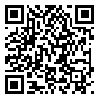دوره 8، شماره 1 - ( 4-1400 )
جلد 8 شماره 1 صفحات 80-73 |
برگشت به فهرست نسخه ها
چکیده: (1777 مشاهده)
Vaccine safety surveillance is important to identify and manage adverse events following immunisation (AEFI) and avoid vaccine hesitancy. Currently, COVID-19 vaccines are administered to large numbers of people to try and curb the pandemic. In this paper, quantitative methods for causality assessment of AEFI are described. Qualitative methods for causality assessment involve an expert panel reviewing each AEFI report to determine whether the AEFI can be attributed to the vaccine. Each AEFI is determined to be classified as consistent, inconsistent, indeterminate or unclassifiable in terms of causality. Quantitative approaches can strengthen causality assessment outcomes. However, the potential for bias and errors should be considered for each safety signal identified. Vaccine and population specific factors may affect AEFI incidence, with a need to obtain background rates to frame safety signals identified into the local context. Several case scenarios from the vaccine safety surveillance in Brunei are used to illustrate the practical application of quantitative approaches for AEFI causality assessment (including comparison of AESI incidence to background rates and disproportionality analysis), which complement the traditional qualitative methods.
نوع مطالعه: Review article |
موضوع مقاله:
Vaccine development, efficacy and safety evaluation
دریافت: 1400/7/11
دریافت: 1400/7/11
| بازنشر اطلاعات | |
 |
این مقاله تحت شرایط Creative Commons Attribution-NonCommercial 4.0 International License قابل بازنشر است. |

